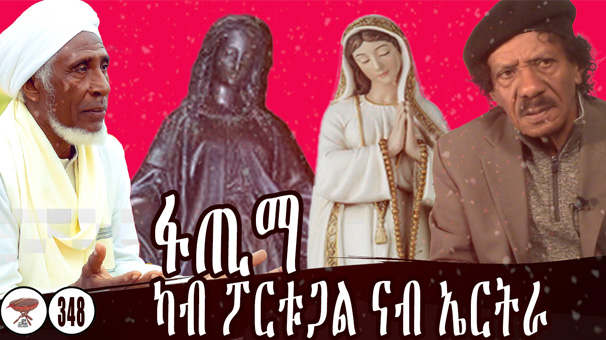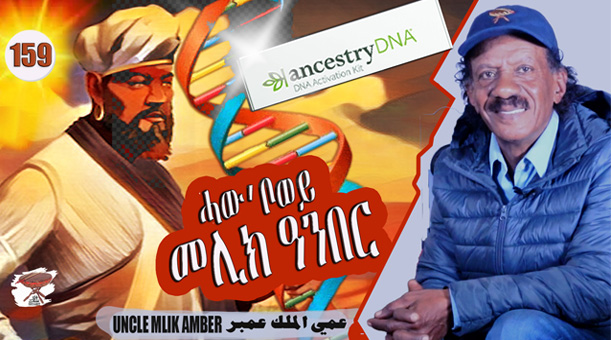Muslim and Catholic Fatimas
Most Eritreans do not know about the Eritrean Black St. Mary, but many have heard of Mariam Daari, the Black icon of St. Mary. I’m not sure whether it was carved from black stone or molded from some other material. The beautiful icon lives in a vast, hollowed baobab tree on the banks of the Daari River, a few kilometers before it joins the Anseba River.
The story of Mary of Fatima originates in Portugal, which once formed part of the Moorish empire when Muslims ruled the Iberian Peninsula for nearly eight centuries—from 711 to 1492 CE.
In the 12th century, a Moorish Muslim princess named Fatima was either married to—or abducted by—a Portuguese knight. The town where she later lived was named after her.
Centuries later, in 1917, legend tells that three shepherd children from the town of Fatima witnessed the apparition of a bright, ghostly figure who introduced herself as the “Lady of the Rosary.” She would become formally known as “Our Lady of the Holy Rosary of Fátima.” The story spread quickly after several apparitions were witnessed by townsfolk, cementing Fatima’s place in religious lore.
Europe was in turmoil at the time. Communism, then emerging, targeted religion, and in the pre–World War I chaos, hardship, and unpredictable future, it made people cling to faith—the only solace. Soon, pilgrimage sites such as Fatima became both spiritual and social sanctuaries—places where the faithful came to pray, seek healing, or simply to find solace amid ruin.
The Mariam Fatima of Daari
In 1869, French nuns established an orphanage on the banks of the Daari River, just before it meets the Anseba River at Tsebab. A local priest, Abune Tuovier, granted them land for orchards. The fertile outskirts of Keren—famous for citrus, guava, mango, and vegetables—funded the nuns’ charitable work. Income from the Daari orchard and offerings by the faithful covered the activities of the priests and nuns.
By 1917, the story of Our Lady of Fatima had made global headlines, even appearing in The New York Times. Perhaps inspired by that story, the priests built a shrine by hollowing the trunk of a massive baobab tree in the orchard and placing within it a black icon of St. Mary, which they named after Mary of Fatima. Today she is known interchangeably as Mary of Daari and Mary Fatima—the first Black Mary in recorded history. Every year, on May 29, pilgrims visit the shrine, and the resilient baobab tree continues to live on.
On that day, people from Keren and those who had moved away returned home to celebrate and visit family. The town’s streets overflow with buses, cars, and pilgrims—though, in those days, Keren had only about twenty vehicles, taxis included. Sergeant Bahta, the lone traffic officer, darted through the streets trying to manage the chaos as Ethiopian army jeeps and trucks forced donkeys, camels, and people to the roadside.
He was always busy, though not necessarily effective—he never dared stop army vehicles, nor would he ticket pilgrims. Yet his polished boots, polo pants, and new motorbike inspired respect. Accidents were nearly unheard of, and had one occurred, it would have entered Keren’s history as a notable event. Sergeant Bahta’s method was theatrical but efficient: if things got out of hand, he would simply rev his motorbike louder to express disapproval.
On weekends, American servicemen from Kagnew Station in Asmara drove up to Keren to enjoy the cool air. Some stayed at the Keren Grand Hotel pool, basking under the sun; others roamed around on motorbikes—Ducatis, Rebels, even Harleys. Many joined the Daari pilgrimage and festival and unintentionally added to Sergeant Bahta’s headaches. His traffic control remained as unpredictable as it was symbolic: more a performance of order than an act of enforcement. His polished black boots, ironed polo pants, helmet, and dark sunglasses added to his charisma. Sergeanti Bahta was a kind, respected, fatherly figure; he knew the drivers of the town. Drivers feared his admonishment—that was his only and worst punishment.
Back to Fatima
The name Fatima is Arabic—though in Eritrea it’s often rendered as Fatna, and in Europe as Fatima. Other variants include Fatime (Iran) and Faduma (sub-Saharan Africa). The name means “weaner”—a woman who has stopped nursing her child, the end of breastfeeding.
In Islamic history, Fatima is the beloved daughter of the Prophet Mohammed and his wife, Khadija. She is revered among Shia Muslims as the mother of Hassan and Hussein, whose tragic deaths marked the origins of the Shia–Sunni divide following the killing of Caliph Ali.
Fatima is as revered by Muslims, particularly the Shia, as St. Mary is by Christians. Catholics see Mary’s apparitions as radiant visions, while the Shia tradition venerates Fatima as Fatimat al-Zahra—“Fatima the Radiant.”
Al-Azhar and the Fatimid Dynasty
Between 909 and 1171 CE, the Fatimid Dynasty—who claimed descent from the Prophet through Fatima—defeated the Abbasids and ruled large parts of North Africa and the Middle East. They founded Cairo and built the great Al-Azhar University under the command of Jawhar al-Siqilli (Jawhar the Sicilian).
And now, before anyone rushes to register to convert—relax. Stories like this are not religious sermons. They are not evangelism. They are history, culture, and curiosity intertwined. Sadly, in today’s world, even curiosity can offend. Too many people mistake sharing information and knowledge for proselytizing. Eritrea’s rulers, for example, see any call to free imprisoned religious figures or to repair places of worship as “religious extremism.” Ironically, that accusation says more about power than about faith. As a result, the helpless lack a spiritual refuge where they can get solace to soothe their emotional damages. The deprivation of Eritreans is that bad– physically and emotionally. And for what? Everything is focused on the well-being of the leaders of the ruling party. Ironically, their condition mirrors that of the oppressed people. That’s what’s at stake.
Stay the course and be resolute. Don’t falter. Dawn is close—the rooster testifies.




Awate Forum